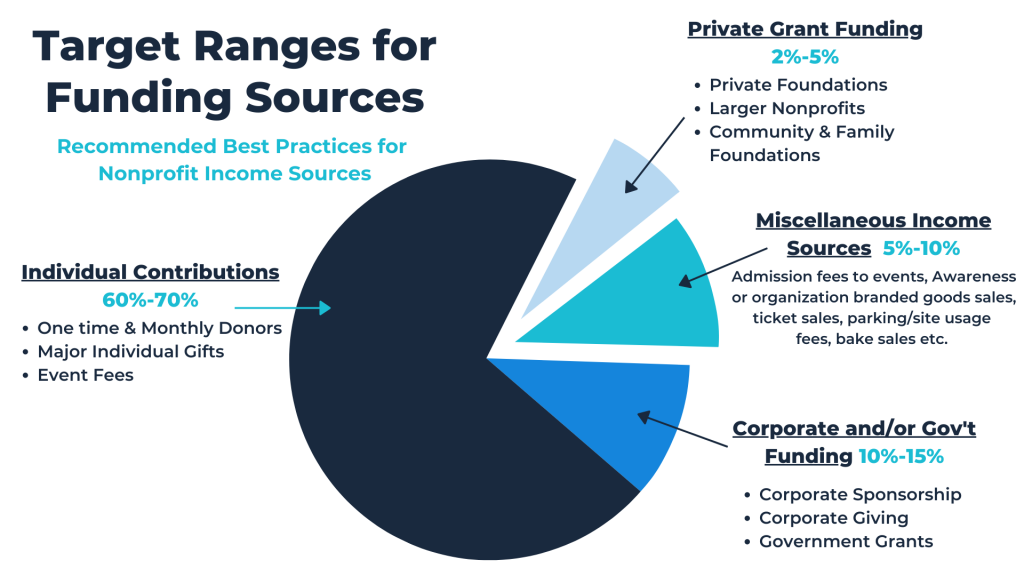Grant fundraising often seems like a daunting and unachievable endeavor.
If you’ve ever applied for nonprofit grant funding, you know that the process takes a lot of time and often has few results. You conduct research, identify foundations aligned with your cause, write the grant request, and submit the application. After all the work, you often wait for a response that rarely ever comes.
You might receive responses from foundations looking to learn more about your nonprofit. However, often, nonprofits do not “win” foundations over in their first, or perhaps even in their first several, grant requests. Nonprofits should approach grant fundraising like for-profit companies approach marketing and sales; it is a pure numbers game. Grant fundraising doesn’t have to be intimidating. Successful nonprofit grant funding begins with good preparation and clear expectations.
Understand the Process
If your nonprofit wants to secure grants, you need to go into it with a plan and understand that nonprofit grant funding is an ongoing process. It’s also vital to keep in mind that grants should only be a small portion (only 5-15%) of the financial help you seek for your nonprofit organization. Also, when applying for grants, be ready to miss more opportunities than you receive.
Foundations are unpredictable. Grantmakers often change their guidelines between grant cycles, change the fields and missions they support, set subjective policies, and in some cases, reject grant applications without providing clear rationale or logic. Remember, grants are competitive. Foundations often review hundreds or thousands of requests when they may only plan to support a dozen or so nonprofits during the grant cycle.
Nonprofits cannot depend on nonprofit grant funding as the primary driver of their fundraising plan for these and many other reasons. Financial help for nonprofit organizations should also emphasize individual contributions and use grants, corporate sponsorships, and other fundraising channels to supplement individual giving efforts.

Is Your Organization Ready for Grant Writing?
Securing nonprofit grant funding is challenging even for established nonprofits with proven track records and experienced staff. If your nonprofit is disorganized, lacks leadership, or is just too young, it’s highly unlikely that foundations will even consider your grant proposal. Before you turn to grant writing as a source of financial help for your nonprofit organization, ensure the organization meets the following prerequisites:
- The nonprofit has been operating as a 501(c)(3) tax-exempt organization for three (3) years or more.
- The tax-exempt status is in good standing with the IRS as well as within all the states in which the organization operates.
- The organization’s mission, vision, and core values are well-defined and compelling.
- The nonprofit is led by an experienced and organized Board of Directors.
- There are successful, high-quality programs in place that align with the mission.
- The nonprofit has consistently demonstrated measurable results.
- You can defend your organization’s deservingness to receive a grant over other successful nonprofits.
- Staff, volunteers, or a nonprofit grant consultant are available who can spend 10-30+ hours each week dedicated to researching, submitting, and following up on grant proposals.
- Create a GuideStar profile and keep it regularly updated.
It’s a Numbers Game

Grant writing is a numbers game. Many fundraising and grant consultants advise nonprofits to take a highly targeted approach, selecting a limited number of foundations that align with the nonprofit’s mission and reapplying multiple times. This is one possible strategy and should be part of any nonprofit’s grant funding plan. However, if you put all your eggs in one highly targeted basket, you risk missing out on other potential grants and are forced to wait until their next cycle begins, which could be a year or longer.
If your nonprofit organization is only writing and submitting two or three grants per year, it is highly doubtful you will receive much, if any, grant funding. You should submit many grant requests if you want to secure grant funding.
Our experience working with clients confirms industry reports that assert successful nonprofits receive 20% of their requested grants. Organizations that experience a highly successful 20% response rate likely meet the Grant Readiness Prerequisites, all the requirements of the particular grant, and send multiple grant requests each month. Without researching, writing, and submitting between one and four grants monthly, nonprofits cannot expect a successful grant funding strategy.
Summary
If your nonprofit is serious about securing nonprofit grant funding, you need to develop a game plan, set clear and rational expectations, and be willing to dedicate time and resources to the effort. When you can commit to these guidelines, you should consider incorporating grants as part of the overall financial help you seek for your nonprofit organization. Just remember, grants will only compliment a successful individual contribution strategy. With very few exceptions, grants should never be your nonprofit’s primary funding source.



